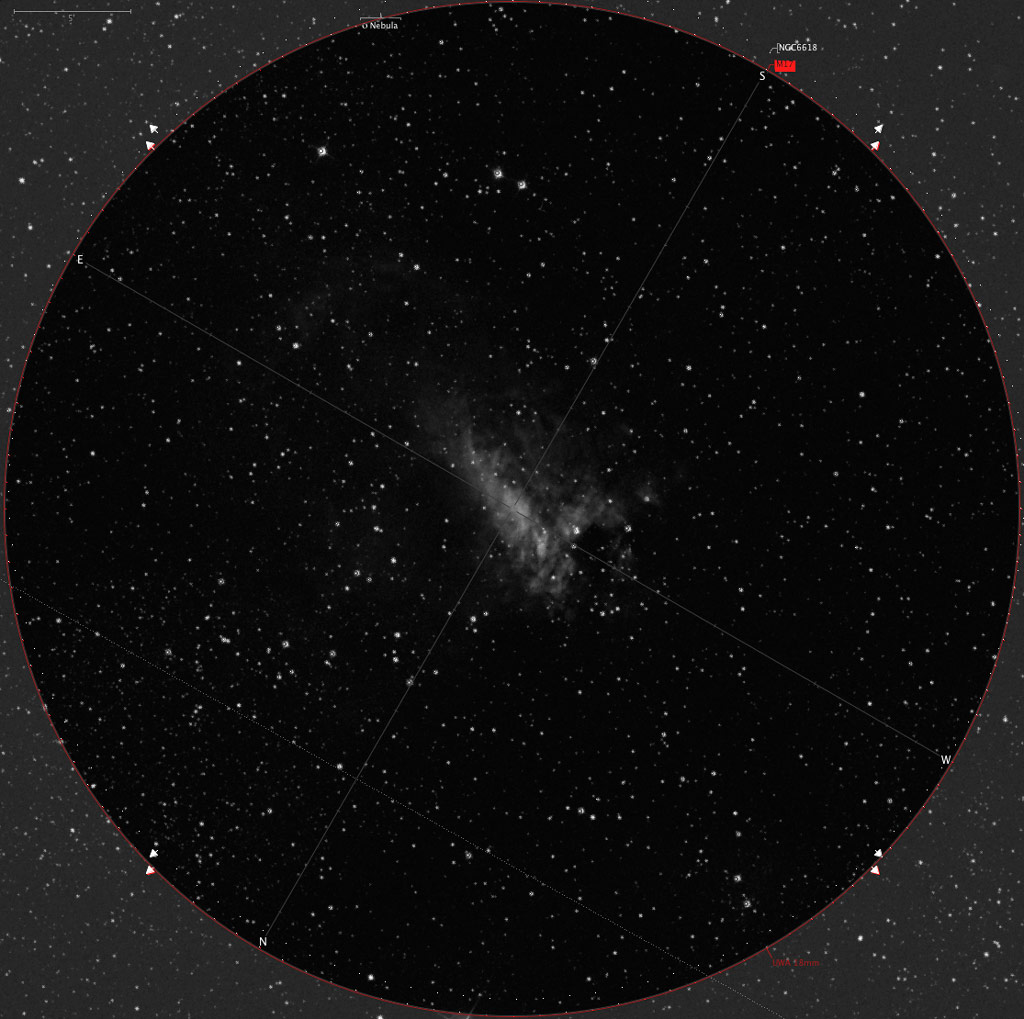
Astroplanner view though Altair Astro 250mm, UWA 18mm, 113 X, 43.6′,
I’m a bit behind with my observations recently. We managed to get out on the Thursday – a few days before the Perseid Meteor show peak, and got some observing done. In between the sessions at the eyepiece, Sand managed to catch about 20 meteors during the hour and a half session. Unluckily for me, I only saw about three while I was looking skyward through the MK1 eyeball.
While Sagittarius has been up, I wanted to bag as many Messier objects here before it all sinks below the horizon for the year. The session started off with perfect conditions. Perfect transparency and excellent seeing and No Moon, till much later. However as the session progressed, the seeing degraded to the point when any nebulosity became very difficult to observe.
While I looked at M16, M17, M18, M29, M21 and a quick whizz over to Andromeda and M31. I won’t cover all the objects here, but two were quite notable for very different reasons.
Let’s start with M17 at the start of the session. The notes read as follows.
A really good night. Last time I viewed M17 was just a little over a year ago.
Observing through 2.5 Air Masses is never going to be that good, but the nebula was still quite striking. The Swan is swimming in an almost East to West direction. While the body and lower neck are very obvious, the tail and upper head were rather indistinct. The Night Sky Observers guide suggests a O-III filter is used to bring out the detail , but at this time, I don’t have one.
Through the Altair Astro 250mm, UWA 18mm, 113 X, 43.6′, the body shows distinct light and dark areas, much like the POSS image and shows a definite taper in body shape from the breast towards the tail. Sand observed the 9.8 mag star at the head end formed the eye, but as I couldn’t see the head it didn’t make sense for me. I do remember seeing this trough my old Meade 8″ Cas, many years ago, and not seeing the texture in the body. So either conditions were better at the time of this observation, or the extra 50mm of aperture makes the difference.
Surprisingly, the object is so much more pronounced through the TMB 80 f/6, Plossl 26mm, 18 X, 2.7°. The APO image is much more contrasty and the Swan really seems to sail through the field of view.
At the other end of the Wow factor, was M18. The log reads
Really disappointing. At Altair Astro 250mm, Plossl 40mm, 51 X, 50.8′ it was almost impossible to distinguish this very open cluster from the surrounding star field. In fact there was another very loose grouping of 8th and 10 mag stars about 10′ to the SSE which if my mount wasn’t pointing accurately, I would have had trouble identifying which was which.
I’m so surprised that Charles Messier was able to pick M18 out from the background. The conditions seemed ideal, but maybe by the time I got to M18, they weren’t. It will be interesting to view this object under different conditions and see if it becomes any more obvious.